30 October 2023
![]() 17 mins Read
17 mins Read
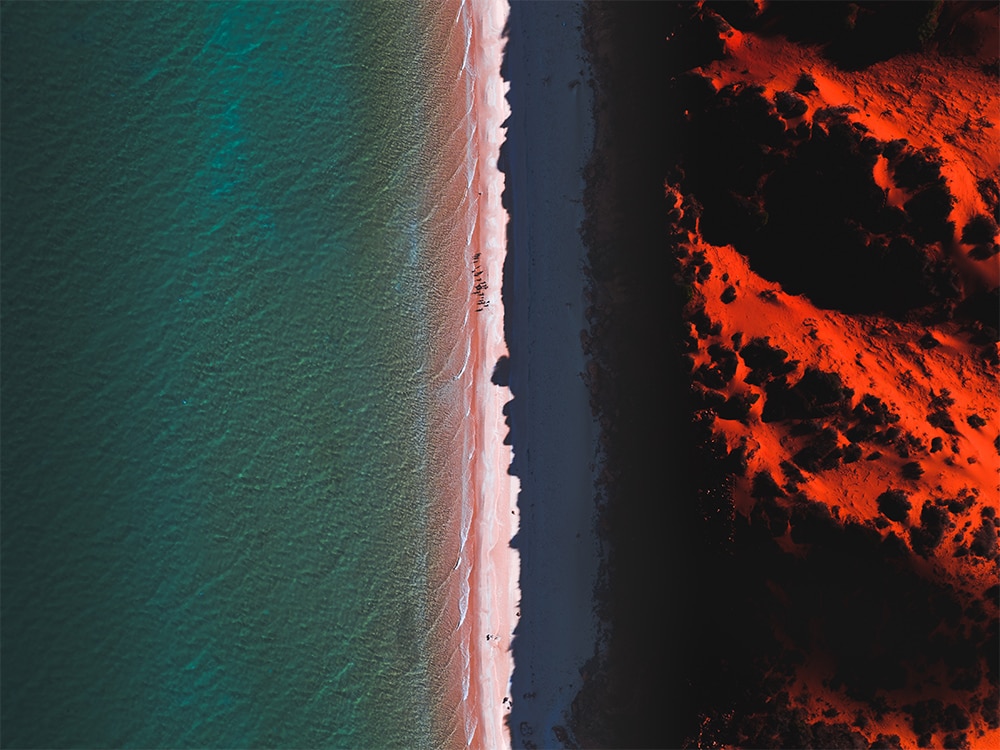
The UNESCO World Heritage-listed Ningaloo Reef, sitting off the Western Australia coast at Exmouth, is the world’s largest fringing coral reef at 260 kilometres in length. It’s filled with a staggering rollcall of sea life: roughly 738 species of reef fish, more than 1000 species of marine algae, some 600 species of crustaceans, and 655 species of mollusc.
And then there are its most celebrated seasonal residents, the hulking yet graceful whale sharks, which congregate here from March to August each year to chow down on plankton. Growing anywhere up to 13 metres in length, the whale shark is not actually a whale but is, in fact, the world’s largest fish.
Whales make the scene here too, though, with humpbacks migrating through the Ningaloo Marine Park each year from July to October. You can see both of these (and turtles and manta rays) up close on one of the various eco tours that head out from Exmouth – Sail Ningaloo offers multi-day sailing adventures that allow for plenty of time on and under the water.
And, once you’re back on dry land, you can get another angle on the sprawling beauty of the reef and its surrounds from the deck in Sal Salis, the luxury safari camp in Cape Range National Park. Stay in one of the 15 eco tents perched in the dunes on the water’s edge.
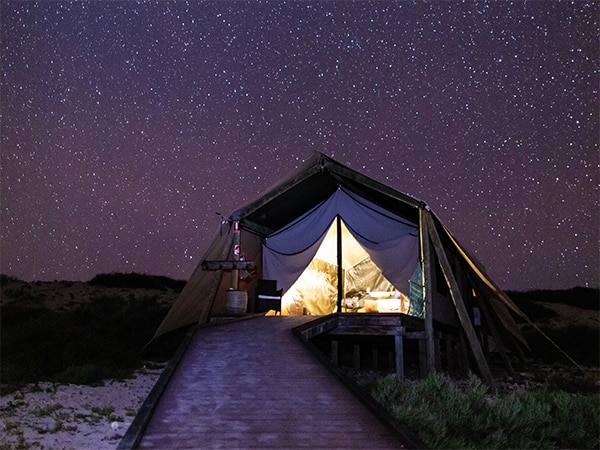
Luxury glamping at its best in Sal Salis, Ningaloo Reef.
The allures of the Margaret River region, located in the south-west corner of Western Australia, are much celebrated, especially when it comes to food and wine. But the area is also home to one of the country’s most stunning coastal walks: the Cape to Cape.
Stretching 123 kilometres and rated at moderate for difficulty, the walk starts at the historic Cape Naturaliste Lighthouse (13 kilometres from Dunsborough; open to the public) and weaves its way down the coast, before finishing at Cape Leeuwin Lighthouse (8.5 kilometres from Augusta; open to the public).
Along the way you’ll walk across pristine secluded beaches lapped by the Indian Ocean, spot kangaroos in the rugged clifftop landscape, see waterfalls and pass beachside hamlets the likes of Yallingup.
There are ample campsites along the way, many of which are free with no bookings required; plan to take seven days to complete the walk, which will set a good pace and allow for plenty of time to take in the mesmerising scenery. Alternatively, sign up for a boutique four-day guided walking tour with Walk into Luxury.
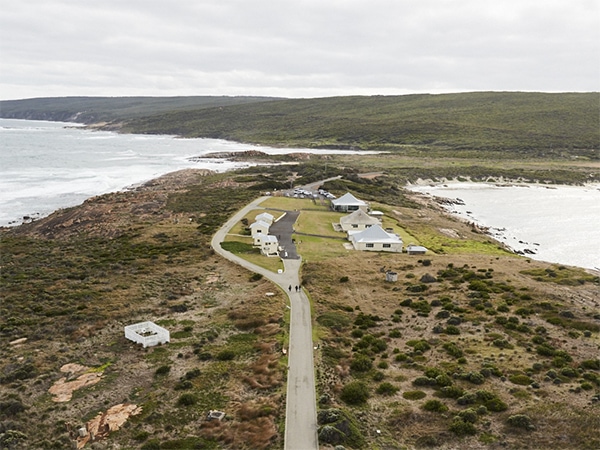
Hike from the historic Cape Naturaliste Lighthouse to Cape Leeuwin Lighthouse.
Perth has been going through quite the transformation in the last year, from new five-star hotels to refurbished classics, here are eight hotspots in the City of Lights.
1. As well as boasting 205 rooms and suites, a slick rooftop bar and outdoor heated infinity pool, the late 2019 arrival of the luxe Ritz-Carlton brand also added another destination diner to the city’s roster: Hearth, serving up a modern Aussie menu utilising plentiful seasonal Western Australian ingredients.
2. Celebrated street artist Matt Adnate is the namesake of Art Series – The Adnate hotel, which is impossible to miss on the inner-city skyline due to its monumental 25-storey exterior mural.
3. The grand heritage-listed Royal Hotel, originally built in 1882, has been meticulously restored and renovated, resulting in a venue that presents as much like a gallery as it does a pub. The 50-seat Fleur restaurant is a local hit.
4. With 80 locations in Japan and three in the US, Furaibo makes its Australian debut in Perth’s Raine Square, serving up its crowd-pleasing menu of izakaya dishes.
5. Coogee Common (a restaurant, lounge bar and gardens) is housed on the site of the 120-year-old Coogee Hotel in the southern coastal suburb of the same name. The menu is filled with dishes made from the produce grown on site.
6. Having designed bars throughout Asia, Ashley Sutton returned to Fremantle to open Darling, Darling, a micro bar with interiors referencing the below deck on a ship from the 1800s.
7. The first synagogue in Perth, built in 1902, the Fremantle Synagogue now houses a collection of bars and dining spaces, including The Old Synagogue, a hidden basement bar, accessed through a fake library wall.
8. Relaunched into Fremantle Harbour after renovations to give it a retro 80s-diner feel, the pick of the menu at Kailis Fish Market is the $6 fish wings platter, sprinkled with one of the at least eight different salts created in-house.
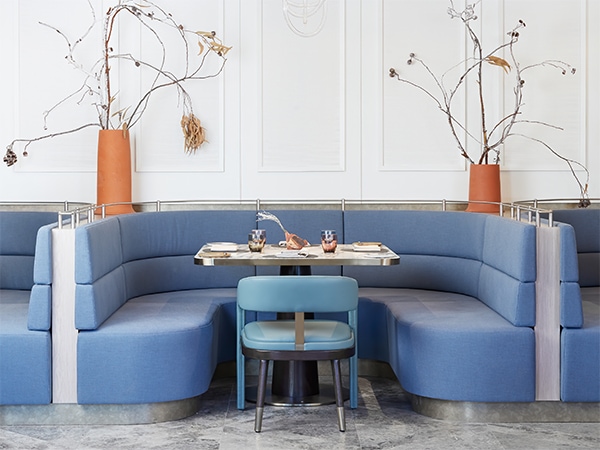
Perth is overflowing with cool new arrivals to experience. (Credit Ritz Carlton)
Jump on a ferry from Fremantle or Perth to explore this pristine island playground – while treading very lightly. Rottnest Island has long been Western Australia’s holiday destination of choice and, while you can still enjoy its timeless slow-paced, laid-back charm, in recent years the island has been busy becoming a super-sustainable destination.
It is recognised as one of Australia’s best-managed ecotourism environments and has established a strong renewable-energy scheme along with a host of sustainability initiatives. Plus, the island and all its plants and critters – including its quokkas – are protected by law.
At 19 kilometres square, and with no cars, Rottnest Island is an ideal place to explore by bike. There are 45 kilometres of walking trails, too, which take in sand dunes, beaches and salt lakes. Alternatively – take an eco-friendly Segway tour to hard-to-reach corners of the island.
Stay overnight to soak up the serenity and people-free beaches after the daytime crowds have gone home: the first low-impact glamping experience on Rottnest opened at Discovery Rottnest Island on Pinky Beach last year. And keep your eye on Hotel Rottnest, which is being reimagined with an extra 80 rooms and a strong focus on sustainability.

Rottnest Island is Australia’s best-managed ecotourism environments. (Credit Tourism Australia)
Sixty kilometres off the edge of Western Australia, lies an island smaller than a footy oval. Only seven people reside on Basile Island, and that’s when it’s busy. We’re on a five-day exploratory cruise with Eco Abrolhos on a 32-person catamaran (the only tourism vessel permitted to stop at Basile).
Few people even know this remote archipelago of 122 islands, named the Houtman Abrolhos, exist. This is a special time for the islands, since 2019 marked 400 years since a Dutch merchant sailor came across the flat crusts of land en route to the Spice Islands of Indonesia. Captain Houtman spotted the archipelago 151 years before Captain James Cook arrived on the east coast of Australia.
Now you can snorkel over coral gardens in the glass-blue water and spot wafting rock-lobster feelers. The Island of Angry Ghosts (the site of Australia’s first mass murder back in 1629) also makes it onto the itinerary. Its pristine inlet of white sand, crystalline water and a playful sea lion seems an incongruous match for the horrors meted out here when the marooned crew of the Batavia were murdered by a gang of mutineers. The Batavia shipwreck was officially discovered in 1963, which you can snorkel when the water is calm.
Nearby Big Pigeon Island is home to one of the last remaining community clubs, where beers start at $5 and dinner is advertised on the whiteboard: $8. There are fewer than a handful of punters inside.
As we dinghy back to our mothership, the molten copper hues of sunset reflect in the ocean, engulfing sky and sea. As darkness takes hold, we see a dozen sharks floating in the blue space at the back of the boat. Like everything in the Abrolhos, the scene is brutal and beautiful in one.
When you’re not on the water, dine at the nautically themed rooftop bar in Geraldton The Old Man and the Sea. Stay at The Gerald boutique hotel. And stop in at the free-entry Museum of Geraldton for an encompassing history of the Batavia and other shipwrecks along the coast.
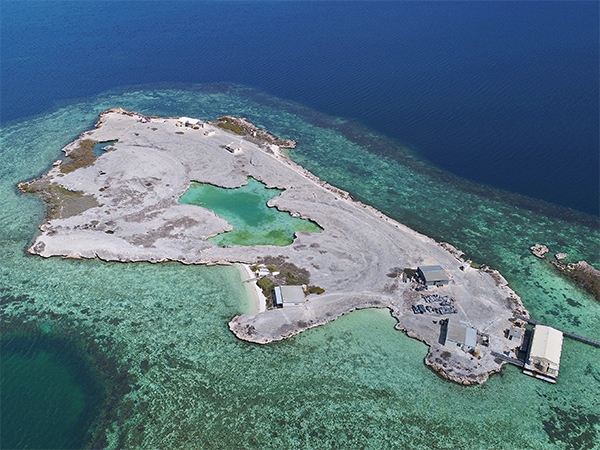
Cruise to the intriguing Abrolhos Islands. (Credit Paul Hoger)
Australia’s most remote luxury lodge experience is accessible only by air and lies 250 kilometres north-west of Kununurra on Western Australia’s out-of-this-world Kimberley Coast.
Open early March to late October each year, the off-grid Berkeley River Lodge is strung like pearls along the coastal sand dunes, overlooking the Timor Sea and surrounded by wilderness. The 20 villas all boast large private decks with 180-degree views of the ocean and outback, and an open-air en suite with a freestanding bath that scores serious tub points.
Guests can opt to spend their days out and about on outback hikes, joining thrilling 4WD tours, fishing for barramundi in remote spots, swimming in freshwater rockpools, exploring rugged river gorges, seeking out Indigenous rock art, learning about the natural history of the area, or even taking a helicopter tour over the epic landscape. Or they can simply lounge by the 20-metre pool at the main house, before settling in for (spectacular) sunset drinks and a degustation dinner.
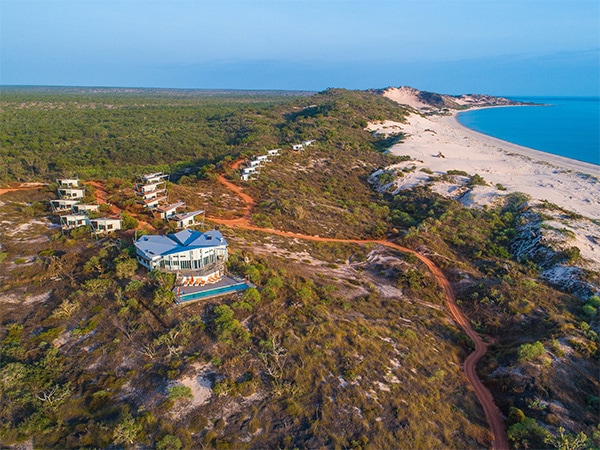
Berkeley River Lodge on the Kimberley Coast is Australia’s most remote luxury lodge experience.
On Western Australia’s Coral Coast, the seaside city of Geraldton is your anchor point for exploring a region also known as the Outback Coast.
Geraldton itself is an increasingly trendy locale with a rich Indigenous history and the mantle of being the windsurfing capital of Australia – with plenty of river cruising, rock climbing, deep-sea fishing, abseiling, horse riding and bushwalking to entertain.
Heading out of town, take the Indian Ocean Drive, a 155-kilometre-long stretch that traces the outline of the Coral Coast between Geraldton and Kalbarri National Park. Plug Port Gregory into the GPS and you’ll find a quiet little fishing village with a very big attraction: Hutt Lagoon (‘the pink lake’), one of Australia’s most hash-tagged locations, is a body of water dyed Barbie pink thanks to the fact it is full of carotenoids produced algae and salt.
The Kalbarri section of the Coral Coast is wonderfully dramatic, with its rugged shoreline marked by bridges and natural amphitheatres. Join the dots between vantage points in Kalbarri National Park where you will feel like you’re on the rooftop of WA looking out over Nature’s Bridge, Castle Cove and Island Rock. The gorges of Kalbarri are known as ‘Nature’s Window’ and on a clear day, it’s like looking into Australia’s prehistoric past.
Head away from the highway to hike from Rainbow Valley to Mushroom Rock where the coloured sandstone is estimated to be about 350 million years old. You can try a birding tour with the traditional owners of the land (Rainbow Valley Cultural Tours), count kangaroos in the late afternoon or simply admire the vast swathes of ancient red earth surrounded by blue sea, which is stretched like denim around its curves.
Large swathes of the outback’s red and golden sands are carpeted in colour come spring, when tens of thousands of Australian wildflowers burst into life.
Western Australia, the epicentre of native flora, boasts some 12,000 species of wildflowers, 60 per cent of which are found nowhere else on Earth. Head to Wildflower Country, a few hours’ drive north of Perth, to see the living kaleidoscope, the Golden Outback (including Wave Rock) and Stirling Range National Park in the state’s south-west, or Bay of Isles in Esperance.
But, of course, WA doesn’t have a monopoly on pretty. The Larapinta Trail, north of Alice Springs, boasts more than 600 species of wildflowers scattered across its 223-kilometre length, while the Snowy Mountains in NSW’s Kosciuszko National Park replace their frigid winter stillness with blooms come spring, including more than 20 alpine species that are totally unique to the park. And, in Victoria’s Grampians (Gariwerd) National Park, petyan – or the season of wildflowers (late spring) – is one of six weather periods recognised by the traditional owners.

See the wildflowers of WA and beyond.
With the launch of a four-hour direct flight from Melbourne to Kununurra (aka the Kimberley Express) set to take place next May, the East Kimberley region will open up to east coast Australians in a whole new way. Travellers will be transported straight to the doorstep of some of the country’s most iconic outback destinations. Start planning now.
Kununurra itself is the gateway town to the East Kimberley – swelling with lakes, rivers and waterfalls, and the ideal place to start your exploration from. Don’t miss a rum tasting and lunch at Hoochery Distillery first.
Around an hour down the iconic Gibb River Road from Kununurra, the equally iconic El Questro is a destination in itself. At over 280,000 hectares in size, this cattle station-cum-wilderness retreat allows you to experience rugged ranges, deep gorges, breathtaking sunsets and ancient boab trees by day before retreating for the night on site. Choose between the accommodation or campgrounds of The Station, the safari-style tented cabins of Emma Gorge or the luxurious nine-suite El Questro Homestead.
Located 70 kilometres south of Kununurra, Lake Argyle is Australia’s largest expanse of freshwater. Take to the water on a cruise – sunset wins, hands down – and pitch a tent for a night or two at Lake Argyle Resort to really soak in the solitude. There are a number of walking trails around the lake that lead you through the rugged landscape and be sure to make good use of the resort’s infinity pool.
Deep within Purnululu National Park, some 250 kilometres south of Kununurra, the World Heritage-listed Bungle Bungles rise 300 metres out of grassy plains. These beehive-shaped orange-and-black-striped karst sandstone domes are among the world’s most interesting geological landmarks. Take to the skies in a helicopter to get a sense of their scale or go off-road on an overnight adventure to Bungle Bungle Savannah Lodge and visit the exquisite natural amphitheatre of red rock, Cathedral Gorge.
The highlight of the Kimberley’s cultural calendar, the Ord Valley Muster, just got closer. The region’s biggest annual festival takes place over 10 days each May with events ranging from exclusive food experiences to film and comedy nights, long-table dining, Indigenous celebrations and a rodeo. Or consider the Kimberley Writers Festival at the end of the dry season each year for one of the most unique literary events you’re likely to experience.
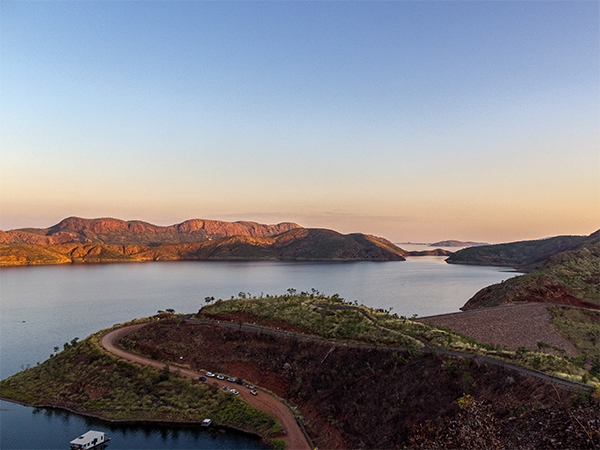
Explore the red rock wilderness of the East Kimberley.
Acacias flower, raucous red-winged parrots breed and flocks of cockatoos feed on the bush onions during the dry Barrgana season on Western Australia’s Dampier Peninsula. Kangaroos are well-fed and fat, lizards hibernate underground and a sea mist moves inland on cool nights.
This is prime walking season for the Lurujarri Dreaming Trail, which travels north of Broome along the coast of the Dampier Peninsula just a few times per year between June and August. A nine-day walk with Goolarabooloo traditional owners following a songline, this is an exercise not in ‘arriving’ anywhere, but in experiencing what it is to live on Country. You’ll cook on fires, wash in the sea and use the same camping spots that have been used for thousands of years in a true example of sustainable living. You might even find yourself seeking out timber for impromptu carving workshops – and making anything from karli (boomerangs), coolamon (water bowls) or cumbuk (clapping sticks).
The Lurujarri Heritage Trail has been running for 32 years and was established by the author Paddy Roe to encourage the members of his Goolarabooloo community to start walking on Country again, to renew and stay connected to their roots and traditional skills by tracing this songline; think of it as an oral heritage map – something that keeps the body of cultural knowledge known as Bugarregarre, the Dreaming, alive. Right from the start, Roe sought to share this ancient culture with outsiders and in 1991 he was awarded an Order of Australia Medal for his facilitation of cross-cultural understanding.
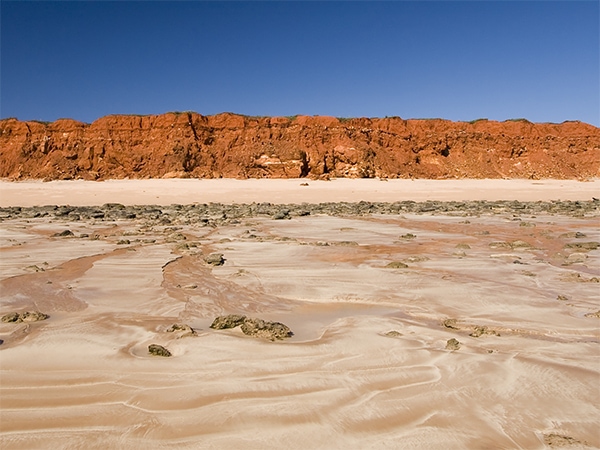
Travel north of Broome along the coast of the Dampier Peninsula on the Lurujarri Dreaming Trail.
The seaside city of Geraldton on Western Australia’s Coral Coast supports a proud Indigenous culture and the Yamaji Drive Trail is testament to this. Looping together 14 sites of significance to local Aboriginal communities, the 195-kilometre trail takes in natural beauty, art and history and can be driven in one to two days at leisure, beginning at Champion Bay (Jambinu).
From the historic town of Greenough, amble along the Greenough River Nature Walk Trail and visit freshwater Bootenal Spring, believed to be the site of confrontations between local Aboriginal people and early settlers. Then head east to Ellendale Pool, a waterhole and campground that makes for a dreamy swimming and overnight spot; encased by giant gums and a rocky gorge, the site is watched over by Bimarra the Serpent.
Continue east to the wildflower town of Mullewa and the red-dirt landscapes of the lower Murchison; the tour ends at Butterabby Graves site, a place of conflict between First Nations people and pastoralists. Visit Geraldton Visitor Centre to pick up a trail map.

The Yamaji Drive Trail loops together 14 sites of significance to local Aboriginal communities.
With more than 185 heritage-listed buildings, a characterful old train station that’s now a museum and the picturesque Avon River running right through it, Western Australia’s largest inland town, Northam, already had a lot to recommend a visit.
But the transformation of eight 38-metre-high grain silos into giant works of art in 2015 not only heralded Australia’s first silo mural and marked the start of a self-guided art trail that runs across the Wheatbelt, it had an energising effect on the town itself.
In 2018, Northam saw the opening of the Bilya Koort Boodja Centre for Nyoongar Culture and Environmental Knowledge, an architect-designed hub that celebrates the rich Aboriginal and environmental presence in the region.
And now, the town welcomes the complete revitalisation of the Farmer’s Home Hotel – a 190-year-old property that evolved from a wattle and daub hut into one of the most distinguished Federation hotels in regional WA.
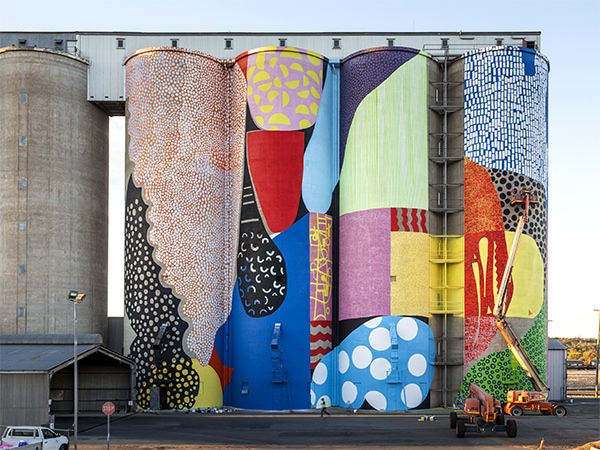
Discover old-school charm and new ideas in Northam. (Credit Bewley Shaylor)
Victorians will soon be able to hop on a flight in the morning and be sampling the epicurean delights and sights of the Margaret River region by the afternoon. Jetstar’s new Melbourne to Busselton route is set to connect the country’s east coast straight to the heart of one of our best wine regions. Here is a hitlist.
Howard Park Wines, a 10-minute drive from the coastal hillside hamlet of Gracetown, and one of the foremost architectural buildings in the Margaret River wine region, with its symphony of native timber, concrete and steel influenced by Feng Shui design.
Nearby Amelia Park Wines also scores serious architecture points for its cellar door. Five minutes in the other direction, Vasse Felix is the region’s founding winery (established in 1967), and remains one of the best. Don’t miss Leeuwin Estate half an hour further south, either – for its art gallery.
Margaret River’s dining scene is on the rise and rise, too, and is a region that rewards exploration: from Arimia, the off-grid restaurant and cellar door you’ll find at the end of an unsealed road to the Chinese-Malaysian menu found at Chow’s Table at the organic House of Cards winery.
And its increasingly hip towns serve up haunts like Yarri Restaurant + Bar (Dunsborough) with its modern Australian menu, and Miki’s Open Kitchen (Margaret River), which specialises in tempura. Throw into the mix award-winning breweries, craft distilleries and indulgent retreats – along with natural wonders like world-class surf breaks and tall-timber forests – and you’ve got the recipe for the perfect long weekend.
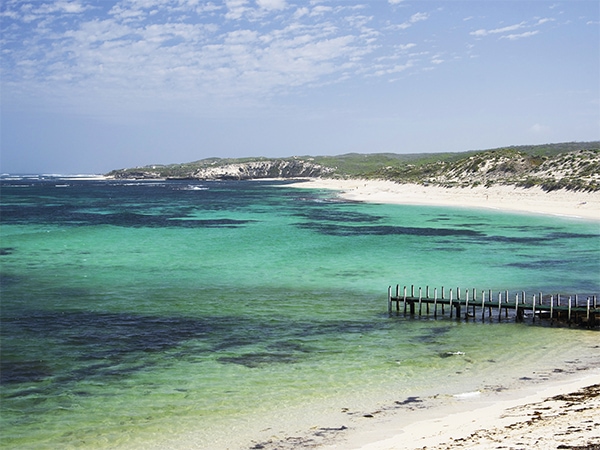
Enjoy the early spoils of the Margaret River region.
LEAVE YOUR COMMENT